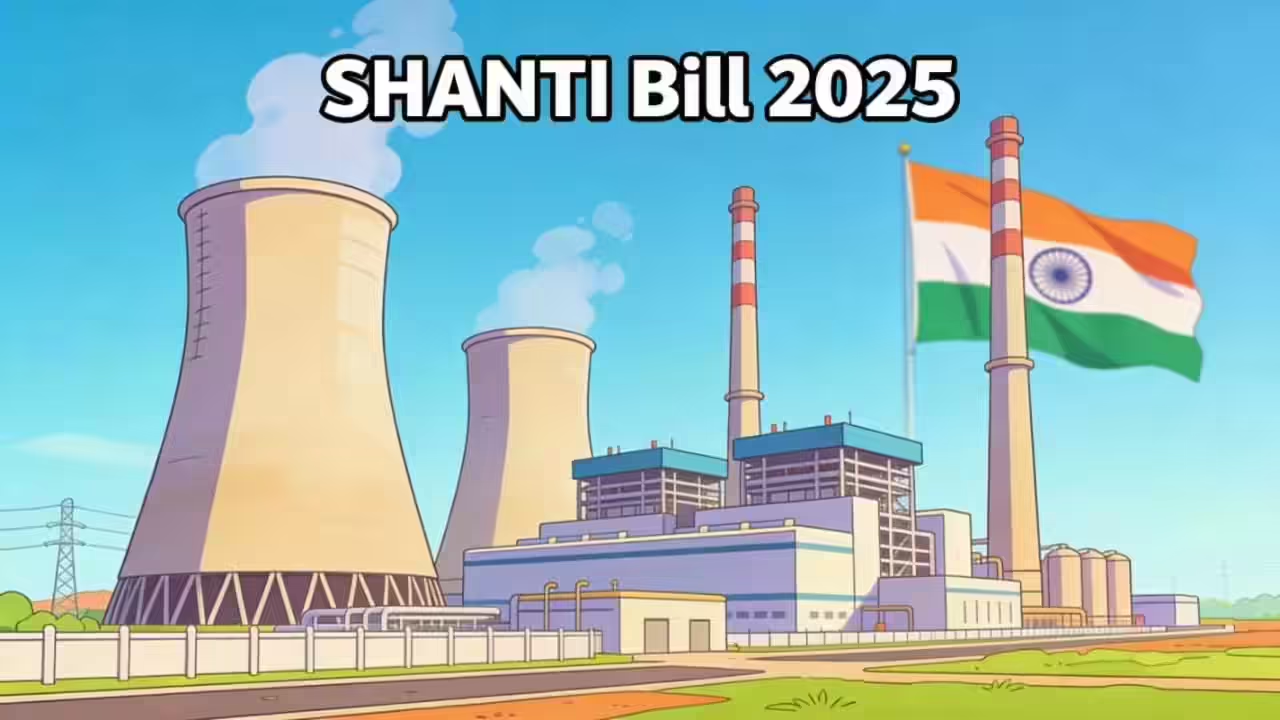Font size:
Print
Thermal Power and Its Pollution Burden
Context:
In its updated Nationally Determined Contribution (NDC) under the Paris Agreement, India made significant climate commitments in August 2022.
More on News
- The country aims to achieve 50% of its installed power capacity from non-fossil fuel-based energy by 2030.
- Thermal power remains a major contributor to carbon emissions, with a 50% share in India’s electricity basket despite this transition.
Thermal Power and Carbon Emissions
- Thermal power generation accounts for a significant portion of carbon emissions in India (20,794.36 kg of carbon from electricity generation).
- Thermal power production is a significant source of pollution, especially in coal-rich States.
- India’s total installed capacity: 4,56,757 MW, with central (22.9%), state (23.7%), and private (53.4%) sectors sharing the load.
- Thermal power plants account for 2,37,268.91 MW of the total capacity, with the private sector contributing 36.2%, state sector 32.03%, and central sector 31.77%.
- India’s carbon emission from electricity generation: 20,794.36 kg.
Coal Reserves and Contribution
- Total coal reserves in India: 378.21 billion tonnes, with Odisha holding 94.52 billion tonnes.
- Coal contributes to 59.12% of India’s energy supply.
- Coal-based electricity generation in 2022-23: 73.08% from coal, 1.48% from oil & gas.
State-wise Electricity Generation Capacity (2022-23)
- Non-Renewable: Maharashtra (31,510.08 MW), Uttar Pradesh (26,729.374 MW), Gujarat (26,073.41 MW).
- Renewable: Rajasthan has the highest renewable capacity at 22,398.05 MW.
Thermal Power Consumption vs. Production
- States producing the most electricity: Uttar Pradesh, Odisha, Chhattisgarh.
- Electricity consumption: States like Gujarat consume significantly more electricity than they produce from NTPC, while production-heavy states consume less locally.
- Key Consumers: Gujarat (4,612 MW from NTPC), Maharashtra, Haryana, Delhi, Punjab, Tamil Nadu.
Pollution Burden
- States with highest share of thermal power: Tripura (96.96%), Bihar (95.57%), Chhattisgarh (94.35%), Jharkhand (92.69%), Delhi (87.96%), West Bengal (87.72%), Uttar Pradesh (81.84%).
- Exporting States: Chhattisgarh is the largest net exporter (535.29 MW), followed by Madhya Pradesh, Himachal Pradesh, Rajasthan, Odisha, and Meghalaya.
- Importing States: Gujarat is the highest importer (528.17 MW), followed by Haryana, Maharashtra, Delhi, Punjab, and Tamil Nadu.
Absence of Compensation for Producing States
- India’s electricity and environmental regulations do not compensate States generating electricity from central sector thermal power plants.
- Producing States bear pollution costs while consuming States benefit from clean electricity.
- Coal-rich States (Jharkhand, Chhattisgarh, Odisha) generate the most thermal electricity but have lower per capita electricity consumption than wealthier States.
- Resource curse: These States suffer environmental damage without economic gains.
Taxation and Revenue Imbalance
- Corporate Social Responsibility (CSR): Funds spent on peripheral development are insufficient to address environmental damage.
- National Clean Energy and Environment Fund: Supports renewable energy but does not compensate thermal power-producing States.
- Electricity as a Concurrent Subject (Constitution of India): States can levy taxes on electricity consumption and sale but not on its generation. Central government does not tax electricity production.
- Ministry of Power’s October 2023 directive: Prohibits States from imposing additional taxes/duties on electricity generation.
- Goods and Services Tax (GST) exemption: Electricity is exempt from GST. Transmission and distribution services are also GST-exempt.
-
- Result: Consuming States benefit from electricity duty while producing States get no revenue but suffer pollution costs.
Proposed Compensation Mechanisms
- Tax on Thermal Power Generation: States with central sector power plants could impose a generation tax. Alternatively, the Union government could collect and distribute the tax revenue to producing States.
- Compensation via the Finance Commission: Previous Finance Commissions have recommended fund transfers based on environmental concerns. The 16th Finance Commission should consider India’s climate commitments and develop a fiscal mechanism for compensating thermal power-producing States.
- Need for Equitable Policy: Producing States should receive financial compensation for the pollution burden they bear. Fiscal transfers should align with India’s sustainable development goals and international climate commitments.


